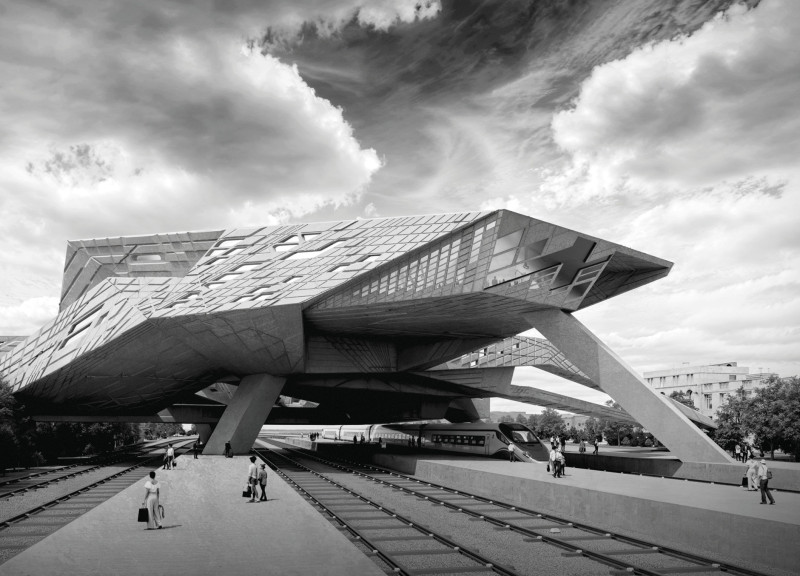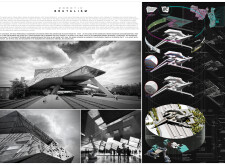5 key facts about this project
## Analytical Report on the Architectural Design Project: "Robotic Brutalism"
### Overview
Located in Dessau, Germany, between the historic Dessau Bauhaus and the New Bauhaus Museum, the "Robotic Brutalism" project represents a contemporary interpretation of architectural principles rooted in the Bauhaus movement. By leveraging advanced robotic construction techniques, the design seeks to reimagine traditional materials and forms in a manner that aligns with both historical context and modern technological advancements. This approach positions the project as a dialogue between the past and the future within architectural practice.
### Architectural Expression and Spatial Strategy
The design features a dynamic arrangement of geometric shapes and volumes, characterized by angular facades and layered planes that create an impression of movement. This fragmentation not only enhances visual interest but also contributes to an evolving play of light and shadow across the structure throughout the day. Open public spaces are woven into the design, promoting community interaction and engagement. The integration of transparency throughout the building encourages exploration and strengthens the connection between indoor and outdoor environments.
### Material Innovation and Construction Techniques
The project employs reinforced concrete for its structural benefits, allowing for the creation of complex forms. Glass is strategically utilized to enhance transparency and diminish barriers between spaces, fostering a sense of openness. Steel serves as a crucial component for structural reinforcement, enabling the realization of the design's dynamic forms. Additionally, the use of aluminum cladding offers both aesthetic appeal and improved building efficiency, reflecting light and enhancing the overall visual experience.
A notable feature of this project is its incorporation of robotic fabrication methods, which facilitate precise detail and efficient construction processes. This approach signifies a shift in construction practices, raising considerations regarding the future role of technology and labor in the architectural field.



















































